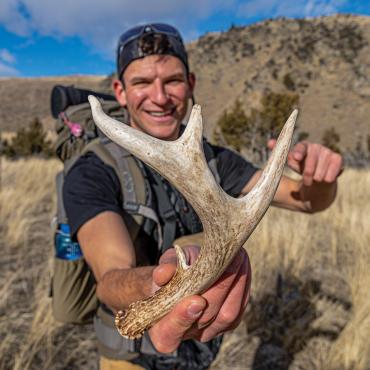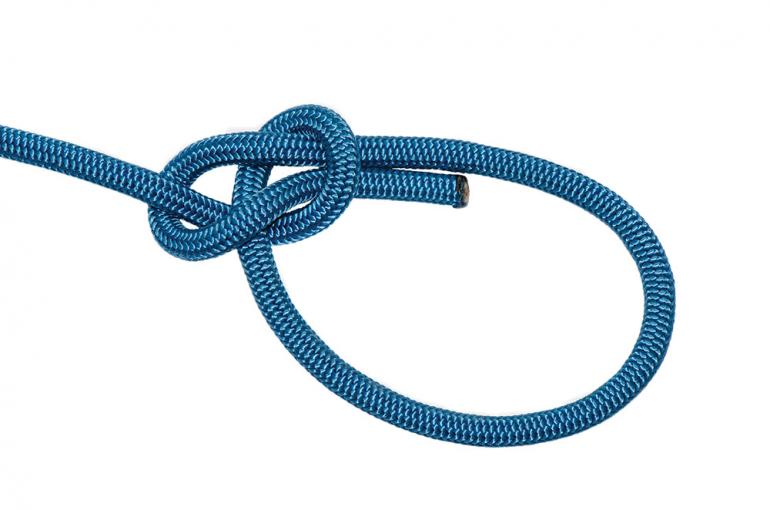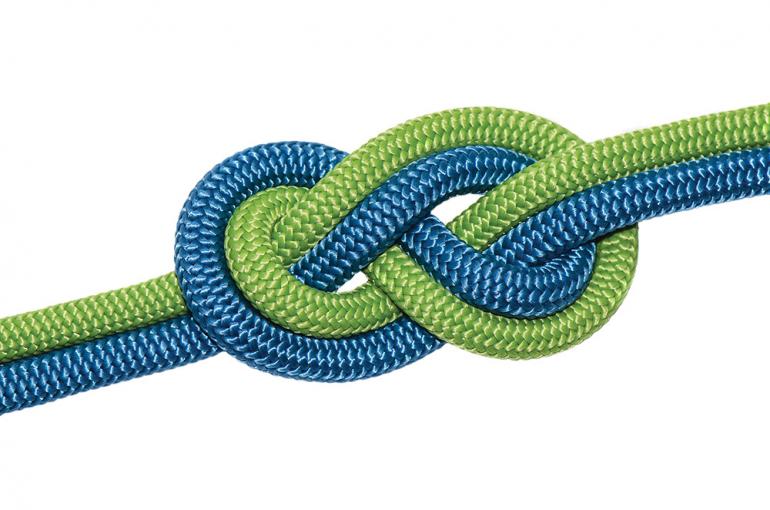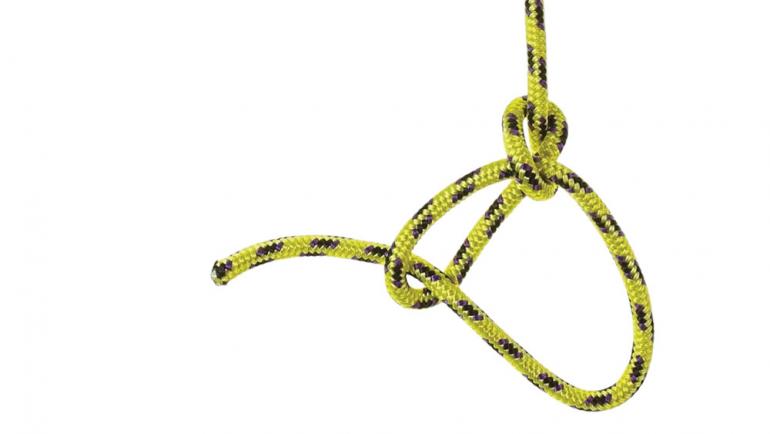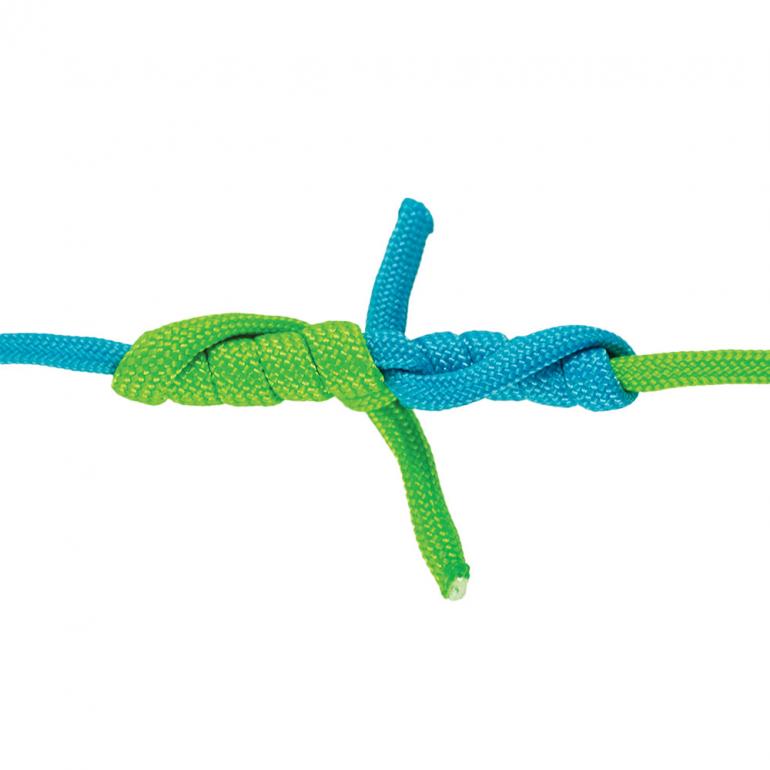Tie One On
Back to the basics.
No matter your occupation or preferred activities, there are a handful of knots that every Montana outdoorsperson should know—knots that are useful in all kinds of situations, whether paddling the rivers, camping in the mountains, or moving your mattress to the fifth rental house in two years. Learn the following four knots, and you’ll be all set.
Bowline
The bowline might be the most versatile knot ever invented. It’s used to tie a loop on the free end of a rope. However, that loop can be strung around something while crafting the knot—say, a tree branch to tie off a boat, a food bag to construct a bear-hang, or a car frame to attach a tow rope. Thanks to the mechanics of the knot, the rope will break before it ever pulls lose. Yet to undo it, just “pop” the shoulder of the knot and pull it apart with ease.
Double Figure-Eight
The double figure-eight is a climber’s bread and butter. It’s used to connect the harness to the rope—a pretty dang important connection point. Fortunately, it’s simple to tie. Once you’ve made the initial loop and strung the rope through the harness, just be sure to retrace it exactly the same way. Have a friend check your work. Like the bowline, the double figure-eight can be used to create a temporary loop at the end of any rope or cord—but it’s more streamlined, so lends itself to attaching a carabiner, among a myriad of other applications.
Trucker’s Hitch
Even if you don’t have a truck, you’re gonna use the trucker’s hitch at some point to lash something to your vehicle—after all, you’re in Montana now. This dead-easy knot makes an adjustable loop (called a “hitch” in knot lingo), so it can be cinched down tight to secure a load. It’s commonly used to lash a canoe to the top of a car or tighten up the guy-out ropes of a tent.
Blood Knot
Aside from the clinch knot, the blood knot is the most common fly-fishing knot. It’s used to connect two pieces of tippet, or tippet and leader. But you ask: Doesn’t the double surgeon’s do that? Yes, but that knot is best when joining lines of similar diameter. A blood knot can easily connect lines of different sizes, making it far more versatile (not to mention stronger). It’s a streamlined, elegant knot that takes some practice to master, but you’ll never tie another surgeon’s again.

